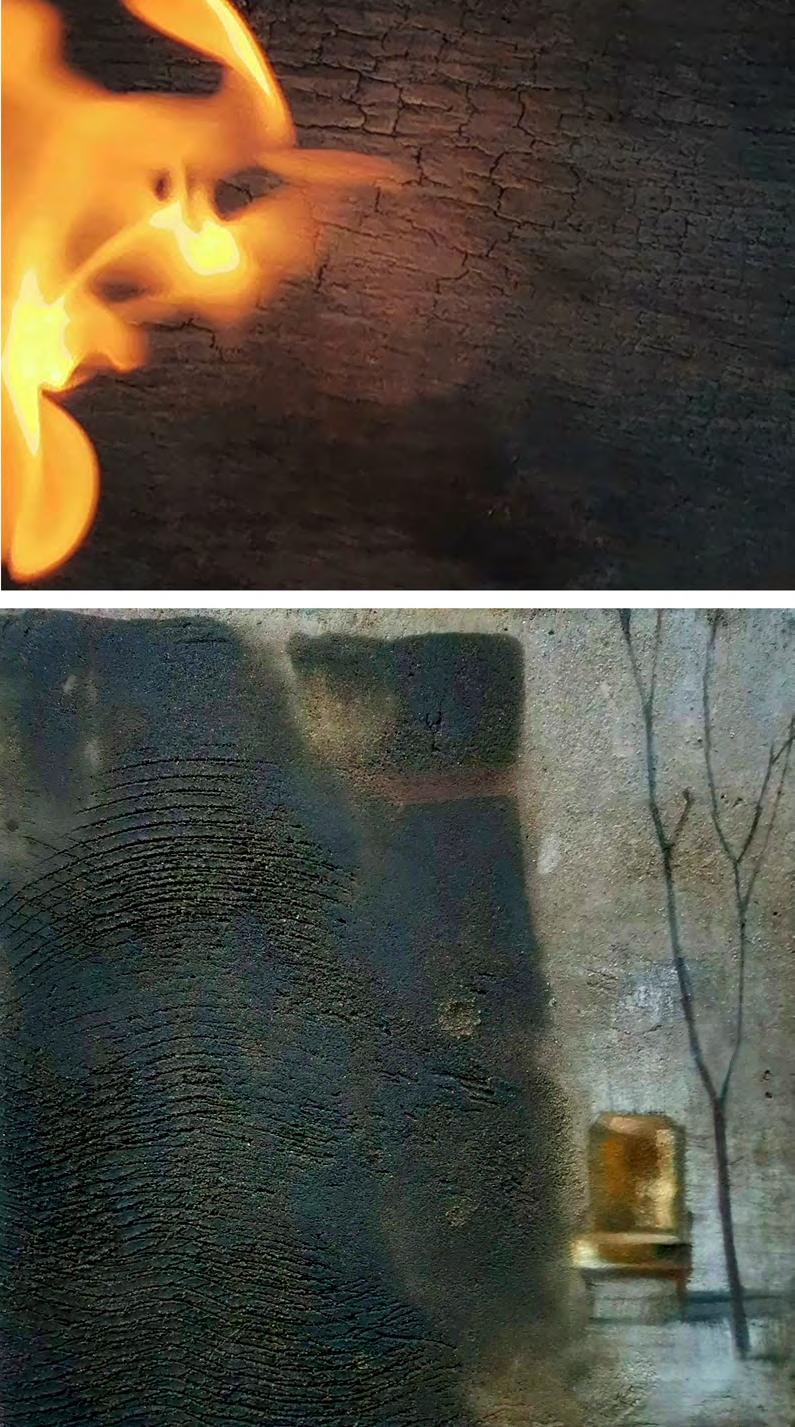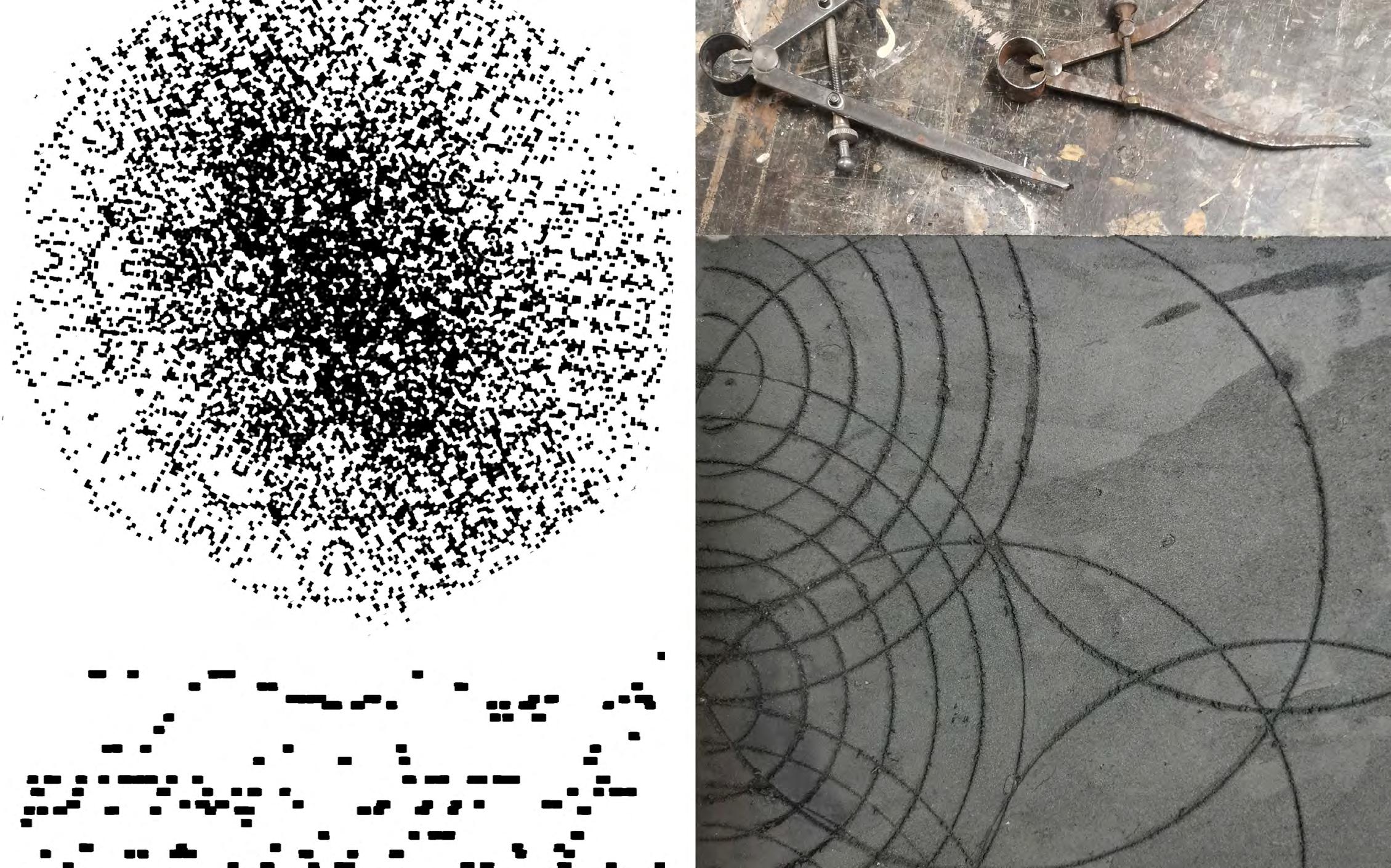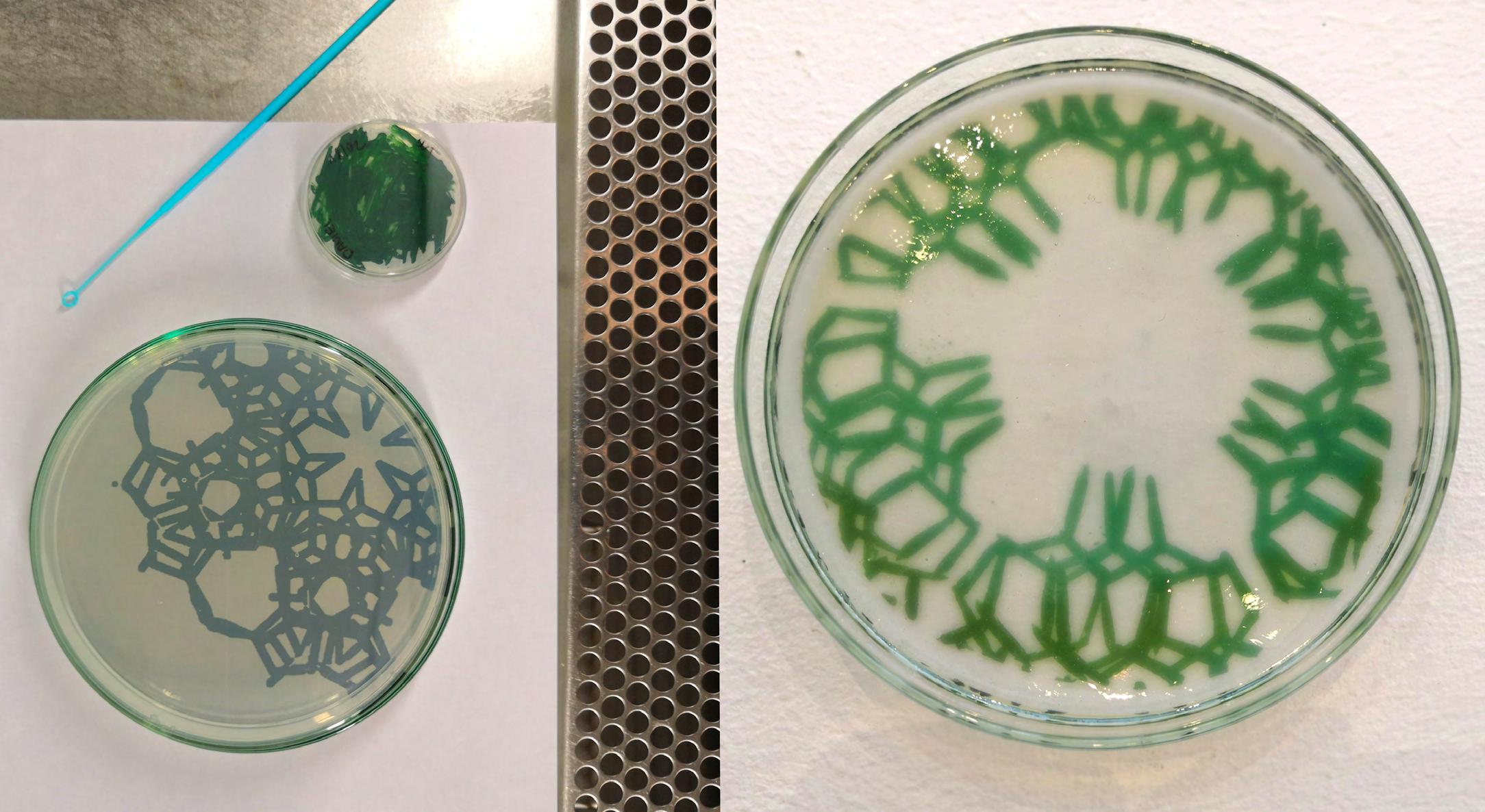
6 minute read
Finnish nature inspires bioart and sound-art
From the heart of the forest in Finland, Silja Selonen creates artworks inspired by the natural environment around her. Having studied sculpting at university previously, she currently makes bioart by using cyanobacteria and portrays the visual side of the hidden world of sound. Silja also creates sound-art where genetic sequences, frequencies and amplitudes are translated to abstract visuals.
While she creates digi-works, she exposes to us the invisible world of waves by using materials found in nature. Uniquely, she sources her biochar based art materials in a sustainable way. Here, she discusses her unique creative processes and natural inspirations.
Advertisement


Q & A - Silja Selonen
Describe the creation process behind your mathematical visualizations of frequencies, harmonies and interferences.
Interest to these concepts hit me when I was doing bioart with cyanobacteria. I was introduced to one of the oldest genetic codes on earth and knowing that -“Any molecule, if You look at it at the nanoscale, has continious vibrations” (MIT / Buehler) - I transformed it to notes by using BIO2MIDI audio-software. Audio structure of an ancient molecule was then composed for organs by my nephew and tiny molecyle filled the hole church with its unique intonation of life.
When studying sound-art I made frequencies and amplitudes of it to visible graphic. I transformed symmetric soundwaves and separate tones to vector images, edited them by rotating, dublicating etc. Furthermore, I created a QR-code from this genemusic and edited it to hexaconal “rose window”. It was laser-cutted on an iron-plate and afterwards welded to be a part of a sculpture named “Genesis”. By scanning the cutted code with mobile-app, it is possible to listen the melody of early earth.
Besides these digi-works I try to find a way to express the world of waves and resonance by using matter and energy from nearby nature. Now I am carving
Above: Genesis - iron, sound. © Silja Selonen. All rights reserved.
and striking clay-plaster and this earthy, ruff, 3-dimensional and mushy thing is fascinating. I think the energy is visually like ellipse, circle, spring or wave. The matter is more like geometric, balancing platonic solid. And together with time they make a vibrating space of an endless Moire´.
How do you sustainably produce biochar and use it in your art?
I make biochar by burning waste wood on selfmade cone model stove. Burning in low oxygen pyrolysis makes all non-carbon material gasify and burn away – only carbon remains. Besides a good oldfashion fertilizer biochar is also a true carbon sink. When used in art, the artwork itself sincerely underlines the issue of climate change.
I use it in my clay-plaster works. Every ingredient of this natural plaster comes from nearby - clay and sand from neighboring village, biochar and seeds of bullrush from our own preserve. Biochar is grinded to fine powder and it makes the clay-plaster the darker the more you add it. I like this darkness of elemental carbon, and the fact that it is one of the main building block of life. I make interference and moire´-effects on fresh plaster mostly by carving and pressuring. Then on dry surface I apply some
linseed oil and self-made egg-tempera. I paint figures, that represents life and existence. They are painted as in blurred motion because life really is so temporary and fragile. On the contrary the carbon in biochar, aluminium and silica in clay & sand are more permanent elements, plus athematical lines represent never-ending energy. The dialoque between abstract and realism is something that always seems to appear in my art of paintings.
While working with a scientist, how did you successfully create cyanobacteria BioArt?
I had opportunity to work in laboratory of University of Turku, department of biochemistry/ molecular plant biology. Dr. Paula Mulo guided me as needed and students of her research group grew cyanobacteria-plates and pure agar-agar plates for me. I moved first the bacteria from dish to dish with laboratory tools, but disinfected artist pencils seemed to be better to achieve more even strikes.
The agar is a soft ground and stands no pressure, also the bacteria is quite invisible in this point. Everything needed to be done with remarkably hygienically in fume hood. I made pictures of DNAstructures, notations and letters to place them under the plates to quide drawing. Afterwards, the plates were sealed and carried to lightning-room to get some good frequencies of lightwaves for a few days. Some bacteria grew nicely, some failed. When I got the plates home I opened them and drying and dying began.
Additionally, since both bacteria and algae are living materials - mold, shrinking, cracking etc. can happen. After drying there lies a thin layer of green drawing on the bottom of the dish. It is fragile and vanishes in daylight, so I cover it with UV-resin on the upper side and with UV- film underneath. Cyanobacteria can sometimes change its color or fade still. I have though successfully maintained the bright color for 3 years now on most of the plates.
What exhibitions do you have lined up this year? Any other plans ahead?
Lahti Art and Design Museum curated a public art exhibition for summer 2021, featuring the themes of the “European Green Capital” year of Lahti-town.
My gene-music “Ode in Code” (composed to churchorgans/Arttu Selonen) will chime there in the urban environment through loudspeakers. Later in the summer it can be listened also on a bridge in the beautiful chunnel in Vääksy.
Below: ‘Bioart’. © Silja Selonen. All rights reserved.

By August, my bioart-project should be ready. The Hospital of Kainua has ordered from me an installation of 10 cyanobacteria-drawings. I am working on it, but this Covidtime has complicated the possibility to use laboratory of Turku University.
Also there is coming a mural-project, where I will paint some fragile living thing balancing on lifeless solid.
Furthermore my home-municipality is planning an environment art project, and I shall be a part of it as an artist and a consultant.
Besides these projects I shall continue with biochar. I want to spend days by collecting branches and burning them, damping the fire and collecting the blackest black coal to be used in both gardening- and art-projects.

Feeling the heat and the wind, listening the fire, seeing tones of shadows, sensing the gravity under my feet as living creature in endless vibrating space of energy and time.
Above: Bioart ‘To be’. © Silja Selonen. All rights reserved.
Final thoughts
Silja started creating bioart with cyanobacteria based on the premise that any molecule a the nano-scale has continuous vibrations - therefore it can be transformed to music and visual art.
The artist takes on a diversity of mediums, even sourcing her own biochar using a sustainable method. As she has explained here, while this material is a good fertilizer it is also a carbon sink, giving art and additional depth of meaning when used as a medium, particularly on the theme of climate change.
Being a creative artist who is not afraid to experiment with paint, bio-art, sound and more, we can see in her artworks the inspirations taken from the nature experienced in the Finnish forest landscape around her.
Bio
Silja Selonen is a painter, bio-artist and sound-seeker. She graduated as a sculptor BA year 2009 and has since taken sound-art, light-art, astrobiology and physics classes at local universities. Her works embodies the resonation between frigid physics and improbaple warmth of life.
She lives and works in Northern Europe in the middle of a Finnish forest, where ecological materials play an important role in all of her works.
Links
Website: www.selonen.fi
Instagram: @sselonen

